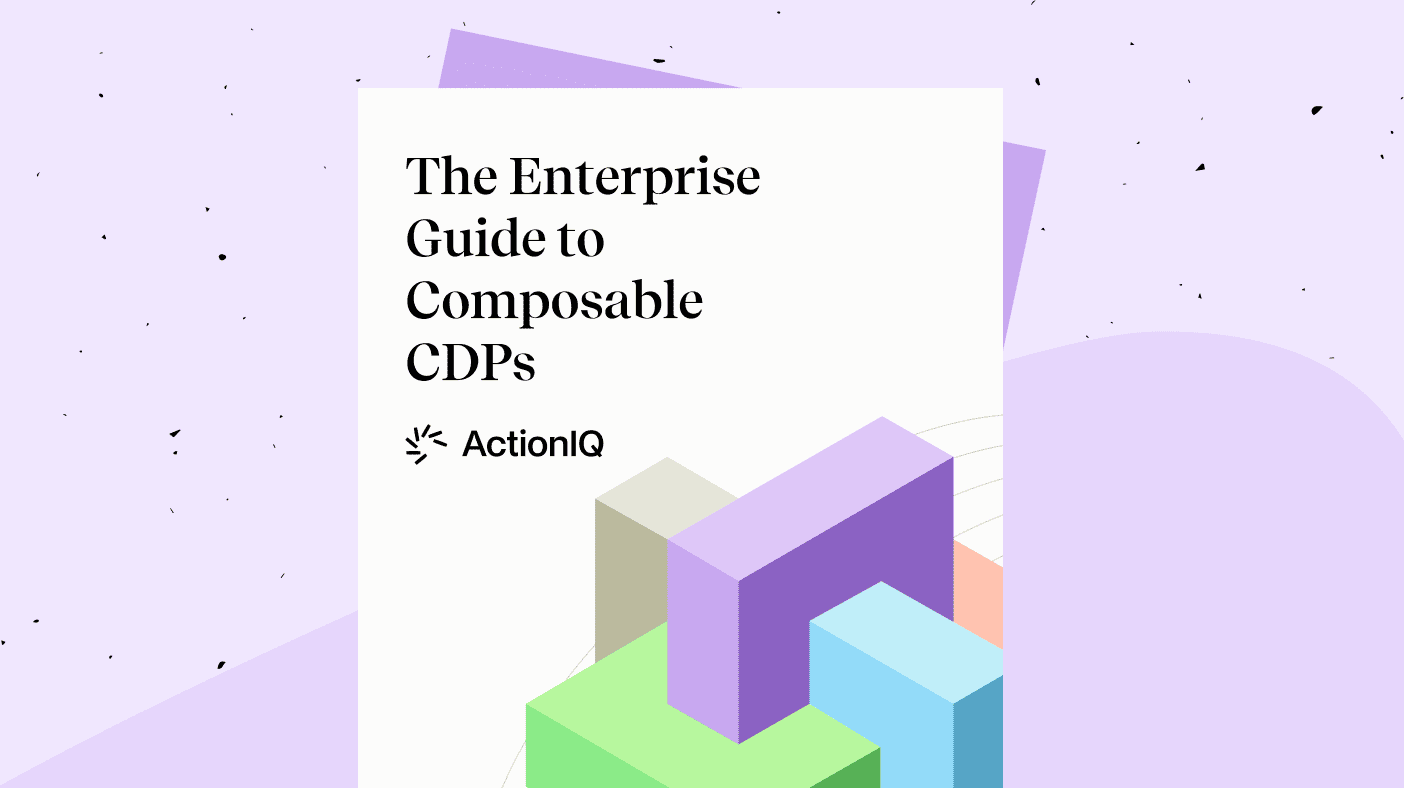The IDEAL Framework: A Recipe to Deploy an AI Use Case

Momentum behind Artificial Intelligence (AI) and Generative AI has gone from hype to massive heights – and it’s only getting started. Surveys and reports show the intent of enterprises to ramp up their investments in AI throughout 2024. But, as the enthusiasm for AI grows, the importance of a well-defined strategy cannot be overstated. Brands will need a strategic blueprint to guide them through the complexities, ensuring that their investments translate into tangible value and returns.
Enter the IDEAL framework – a recipe to navigate AI deployment.
In this blog post, we will dig into the need for a robust strategy for AI investments, and pave the way for impactful integration of AI strategies in 2024 and beyond.
The IDEAL framework has five steps:
- Identify a Use Case
- Determine Data
- Establish a Model
- Architect Infrastructure
- Launch the Experience
The IDEAL Framework: A Recipe to Deploy an AI Use Case
Step 1: Identify a Use Case
The very first step is to determine the AI use cases you want to deploy. What are you looking to optimize? If you are aiming to reduce your Customer Acquisition Cost, your focus should be on identifying prospects with attributes and behaviors similar to your current high customer lifetime value (HCLTV) and directing your advertising and marketing budget towards these individuals.
If customer churn is a problem, pinpoint the behaviors leading to churn, enabling you to take proactive measures before it’s too late.
The following library includes examples you can use to identify your initial use cases:
| Type | AI Solution | AI Use Case |
|---|---|---|
| Audience Optimization | Category Affinity | Identifying audiences for crossell/category growth |
| Product Promotion | Best audiences for product push/launch | |
| High Value Potential | Support LTV Growth Strategies | |
| At Risk of Churn | Churn Prevention Campaigns | |
| Persona Clustering | Message/Creative Testing, Strategy-Specific | |
| Journey Optimization | Channel Affinity | Best channel for communications |
| Contact Frequency | Optimal frequency of contact | |
| Campaign Prioritization | Optimal ranking of campaigns | |
| Time of Send | Best time to send communications | |
| Time Between Sends | Optimal waiting time between communications | |
| Content Optimization | Offer Recommendation | Price Sensitivity Testing/Rollout |
| Product Recommendation | Next Best Product to Promote, Business/Product Hierarchy – Specific | |
| Content Recommendation | Best Content to Recommend, Business/Content Hierarchy – Specific | |
| Budget Optimization | CLTV Score | Predicted $ for Budget Optimization, Company-Specific |
Step 2: Determine Data
AI performance correlates with the quality of the data it has access to. Your priority should be to leverage the depth and breadth of your first-party data. For some use cases, such as prospecting, and in scenarios where you have gaps in your first-party data, you can supplement with second and even third-party data.
However, it’s crucial to note that the quality of third-party data is expected to continuously decrease as technology changes and governmental regulations make it increasingly challenging for third parties to collect customer data.
| First-Party Data | Second-Party Data | Third-Party Data |
|---|---|---|
| This is your data, and you have a clear understanding of its source and quality | Involves partner data, which is essentially the first-party data from another brand or publisher. | Comprises purchased data from unknown sources, typically used to fill gaps in your existing datasets. |
Step 3: Establish a Model
In the third step, determine who will be responsible for building the model used in the identified use case. Large enterprises often have a dedicated data science team tasked with model development, while smaller organizations may rely on external parties such as vendors or system integrator partners to build or customize a model.
However, the decision between building or customizing is crucial for maximizing model performance. While off-the-shelf models from vendors offer a lower barrier to entry, they will fall short in meeting the performance standards achievable by alternatives tailored to the specificities of your business and data.
| Home-built Model | Vendor/Partner Custom Model | Off-the-shelf Model |
|---|---|---|
| Model built by an internal data science team | Model built or customized by a vendor or partner, taking into account business and data specificities | Model available as-is, without customization. |
Step 4: Architect Infrastructure
Great! You have a model, but now comes the critical step of finding a place to operationalize it. Where will the model be running? Brands that have built a model with their internal data science teams often decide to retain control of the model and run it directly within their own infrastructure. This infrastructure could be on-premise or, increasingly, on their cloud data infrastructure. For instance, organizations opting for Databricks to host their customer data will utilize the products and services available to run the model in the Databricks ecosystem.
On the other hand, if a vendor or partner is building or customizing a model for you, they will usually provide a solution to operationalize the model on your behalf.
| Self-Hosting | Vendor/Partner Managed Services |
|---|---|
| Host model within owned infrastructure | Host model within a vendor or partner infrastructure |
Step 5: Launch the Experience
Finally, it’s time to deploy your use case on production. Whether you have decided to optimize an audience, journey or content, you can start leveraging your business applications, enhanced with new AI capabilities.
Deploying your AI-powered use case signals a new era of efficiency and precision within your operations. As the model takes the reins, be sure to continuously monitor its performance and tweak parameters to ensure ongoing optimization. Remember, launching these experiences isn’t just about implementation; it’s an ongoing journey of refinement and adaptation to evolving business dynamics.
How ActionIQ Optimizes CX With AI Use Cases
The IDEAL framework serves as a valuable tool to kickstart your AI deployment strategy. Decisions made at each step will not only vary based on organizational structure, size, and preferences but also hinge on the chosen use case. It is imperative to always start from step 1 for a comprehensive approach.
Regardless of the decisions made, ActionIQ is ready to help. The ActionIQ platform and resources are dedicated to supporting your Customer Experience (CX) activities and the implementation of AI-enabled capabilities.
In one example, an ActionIQ media client wanted to attract new podcast subscribers (Identified a Use Case). Utilizing current subscribers and their attributes as a seed audience (Determine Data), the model—a lookalike model using a random forest classification—was custom-built by ActionIQ’s data science team. Tailored to the media client’s data specifics (Establish Model), the model was operationalized directly in the ActionIQ platform. Marketers then leveraged ActionIQ to identify potential new podcast subscribers and target them with highly personalized campaigns.

This approach resulted in a 28% increase in conversions, driven by an increase in the qualified target audience. The model’s insights into the top features shared by existing podcast subscribers informed marketing outreach efforts.
While the examples in this post predominantly focus on predictive models, the same principles apply to Generative AI and Large Language Models.
Don’t wait. Reach out to our ActionIQ experts to learn more about how ActionIQ can amplify the impact of your AI investments.





